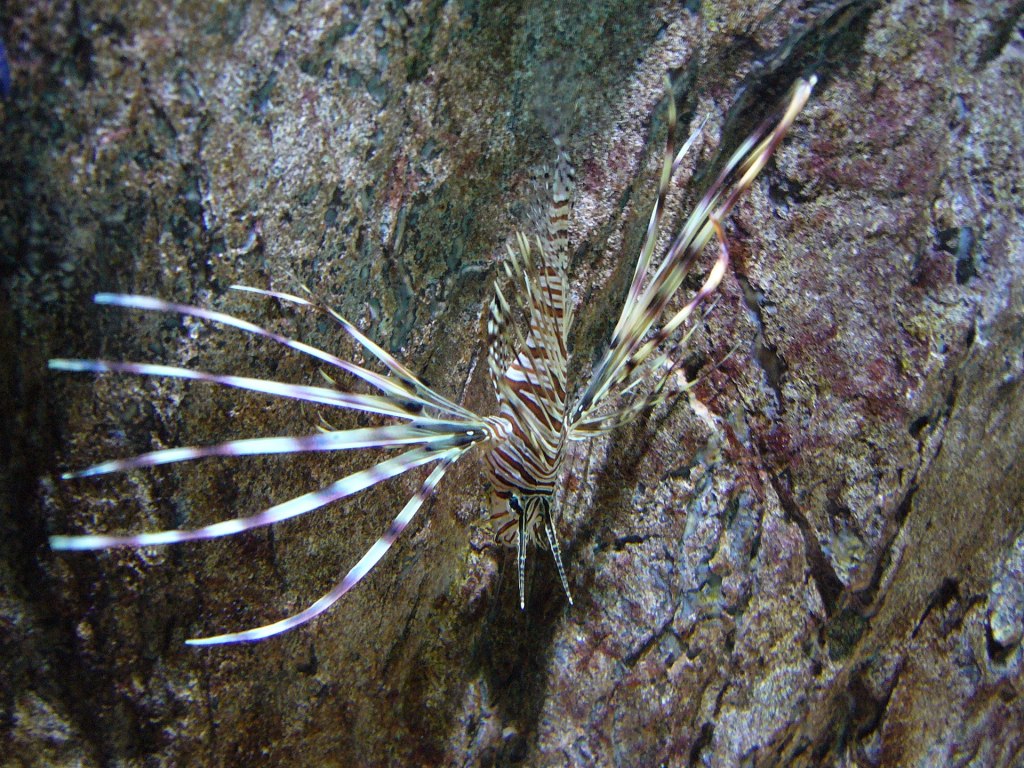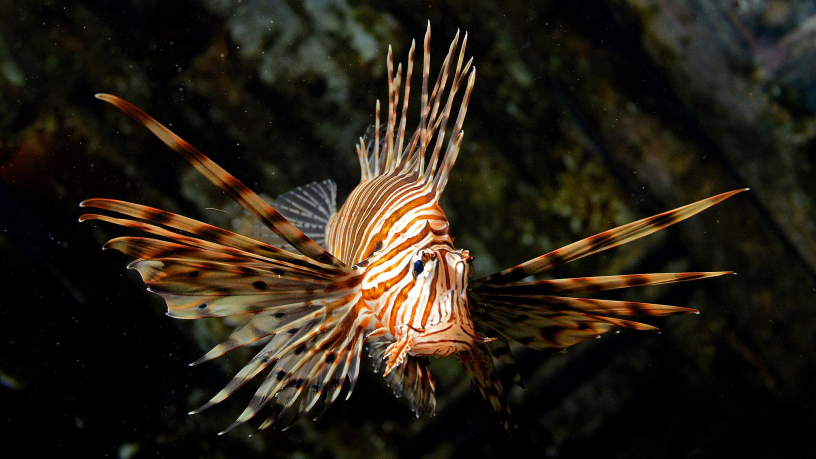I have vague memories of a old computer game called Microsoft Dangerous Creatures that I had as a child, and somewhere on it (either the cover, or on the CD itself) there was a picture of a crazy looking fish. I must have played the game at some point, because I remember it was called a lionfish. I was trying to think of a fish to write about for today’s blog, and viola! The lionfish from Dangerous Creatures popped into my head. There are actually twelve species of lionfish, but I’m only going to focus on the red lionfish, because it looks the most like what I remember from Dangerous Creatures.
Lionfish in general are some of the most interesting looking fish in the ocean. All of them seem to have some kind of stripy pattern, with the red lionfish (shockingly) having red stripes. Red lionfish are also one of the biggest species of lionfish, reaching lengths of almost 50 cm. But the coolest part of lionfish is also the most deadly: they are covered in a number of long, venomous spines.

These spines protect lionfish from predators, as not many fish are willing to impale themselves on venomous spines for a meal. Lionfish venom does affect people, causing intense pain, nausea, vomiting, fever, difficulty breathing, convulsions, diarrhea, dizziness and more. Death from lionfish venom is rare, though the young, elderly, immunocompromised and those who are allergic to the venom are at much higher risk.
Red lionfish are found in the Indo-Pacific Ocean, but have been introduced to the western Atlantic and the Gulf of Mexico. Invasive lionfish are thought to have originated from the aquarium trade, as lionfish are not the easiest to care for. Amateur aquarium owners likely dumped their lionfish after discovering they bit off more than they could chew (in a surprising twist, caring for a hungry fish with numerous venomous spines is not for the faint of heart).
Red lionfish are mainly found in reef habitats, and use crevices and rocks in the reefs to hide in during the day. They are active at night, feeding on other fish, crustaceans, and invertebrates. When hunting fish, lionfish approach from below, their pectoral (side) fins spread wide to hide the motion of their tail. Along with their striped colouring which helps them blend into the reef, this method allows the lionfish to sneak up on their prey and gulp it down in a single motion. When searching for invertebrates to snack on, the lionfish vibrates its long pectoral fins to chase the hiding critters out of safety.

Breeding in red lionfish involves a brief courtship, in which a male approaches a female, and then begins circling her. The fish will then swim up to the water’s surface, and back down again. They may repeat this a few times before the female lays her eggs just below the water’s surface. The male releases his sperm onto the eggs, which form into mucosal balls. As many as 30,000 eggs can be laid during a mating. Thankfully not all of them make it to adulthood, or there’d be a lot of spiny, venomous fish in the ocean!
There have been numerous efforts to contain and control the invasive populations of lionfish, as their presence threatens reef ecosystems in their non-native habitats. Studying lionfish in their native habitat may provide some clues as to how their population is naturally controlled, but for now, trapping and culling populations is the main method of control. Another method which shows some promise is promoting the consumption of lionfish. Humans are the most voracious predators of all, and apparently when prepared correctly, lionfish don’t taste half bad.
While invasive species can cause problems for ecosystems, I do have to admire species that are hardy and flexible enough to establish themselves in a brand-new habitat. That, combined with their super cool style and crazy venom spines, make lionfish one of my new favourite fish. Of course, I still don’t think I’d like to meet one!
Cover image by Amada44, CC BY 3.0, via Wikimedia Commons, cropped to fit
